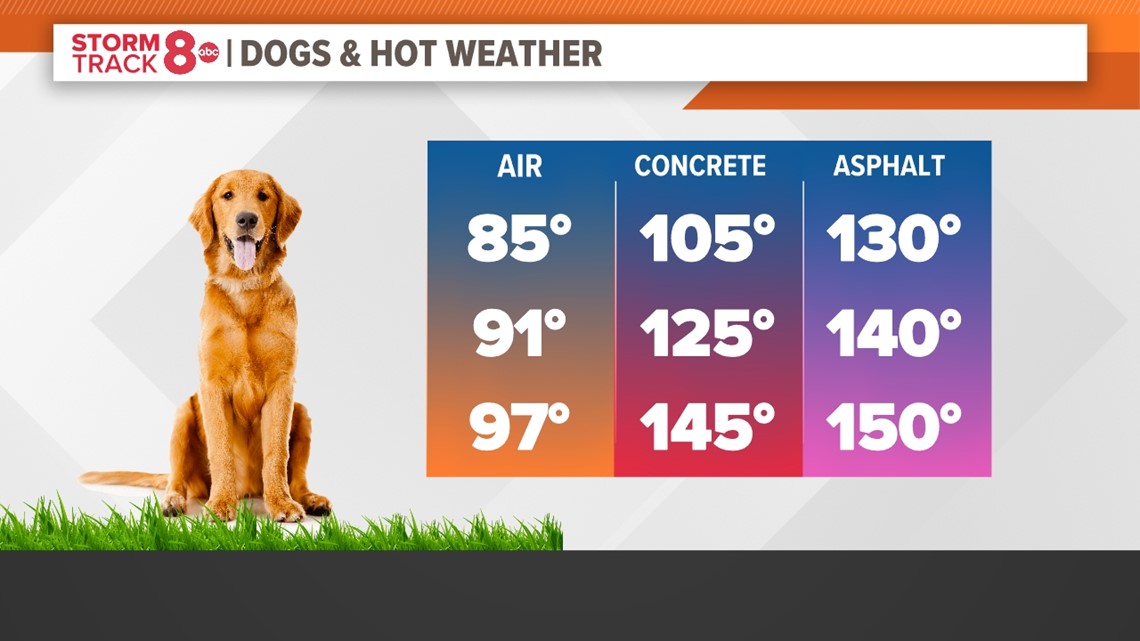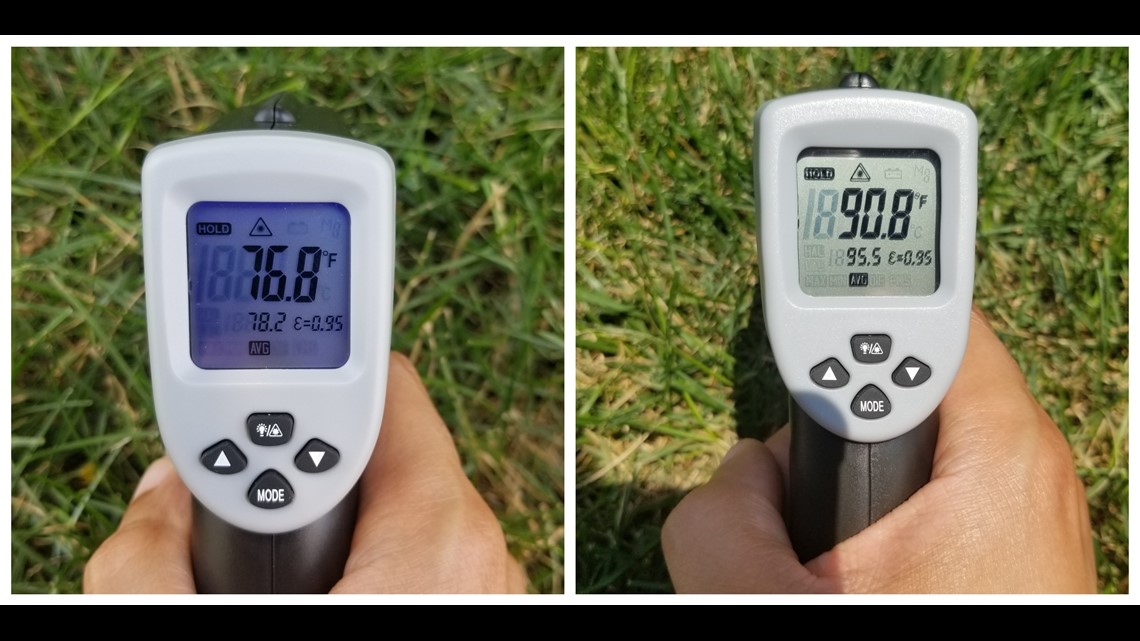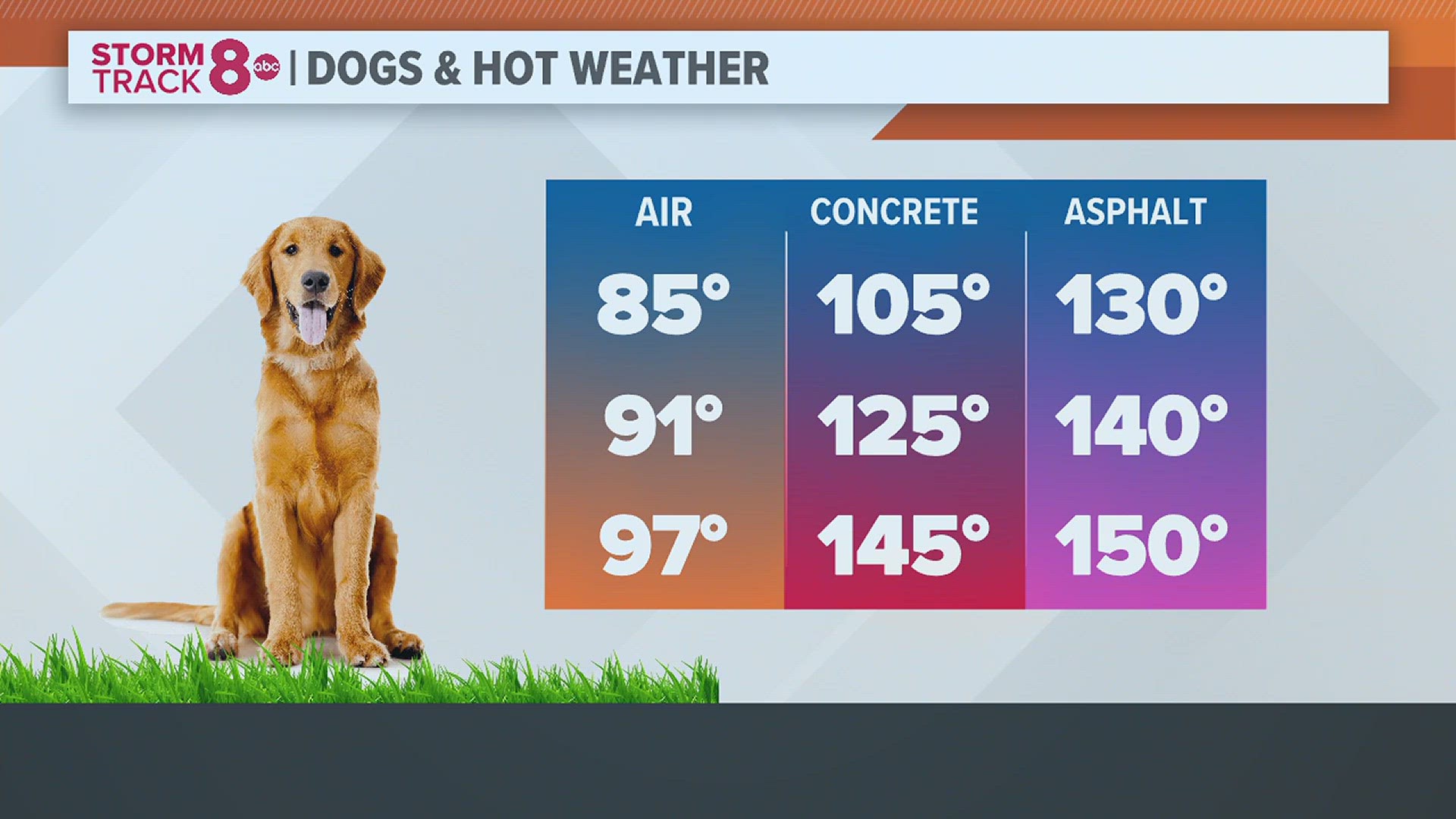MOLINE, Ill. — The first significant push of summer heat and humidity is on schedule to arrive this week before we close out the month of July. Not only will our bodies be under stress at times, but so will our pets, too! This brings about an excellent question from Rita in Moline!
It was 86 degrees with low humidity and cloudy. I wasn't sure if it was too hot to walk my dog. Does this mean that even if it's hot out, I can walk my dog if it's cloudy?
Naturally, we would assume that the lack of sunshine would mean cooler pavement temperatures, and while that may be true in some cases, in most, it really doesn't matter. Even on a completely cloudy day, incoming solar radiation from the sun will still penetrate the clouds and reach surfaces like sidewalks, heating them up. Even with an air temperature in the middle 80s, that pavement surface can quickly reach temperatures ranging from 105 to 130 degrees! Way too hot for not only our bare feet but your pets, too!


There's a really simple method to check and see if the pavement is too hot for your pet to handle. Simply take the back of your hand, not your palm, and rest it against the surface for five seconds. If it's too hot for you, then it's too hot for your pets. If you are feeling adventurous, you could outfit your pet with shoes.
Our sister station WHAS in Louisville, Kentucky took things a bit further and used an infrared thermometer to test the temperature of different surfaces. During this test, the air temperature was in the lower 90s.






In most of these cases, the color of the surface can play a huge factor in determining how hot it can get. Darker colors will absorb more of the sun's energy while lighter colors will reflect some of it. We call this, albedo.
Have a question that you would like me to answer for an upcoming Ask Andrew segment? Submit it, here.

